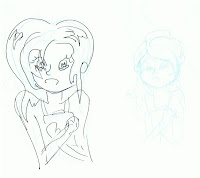Blog Archive
-
▼
2009
(70)
-
▼
November
(26)
- Uncoupling - Further testing
- A Bit2Much Left4Dead2
- Fossil Frolics
- A Mixed Bag
- Uncoupling Test 3
- Spirited Away
- Uncoupling Test 2
- Break it Down, (it's Hammertime)
- Uncoupling Test 1
- I Met the Walrus
- Animatics
- Crash goes today's productivity
- Dopesheets and Storyboards
- Life Drawing Continued
- Getting Jilted
- Good Vibrations
- Why Hello There
- Bad Acting 101
- Are You Trying To Say You're Jilting Me?
- Flip Festival (Day 2)
- Flip Festival (Day 1)
- Flip Festival Launch
- Rocketman Evaluation
- More: Getting to Rocketman
- Getting to Rocketman
- Its all gone A cappella
-
▼
November
(26)
Popular Posts
-
Here is the final little animation for expressing and exaggerating emotion in a face, I had to slow it down to 8fps as it was whizzing pas...
-
A little more experimenting with resin whilst doing other bits and bobs. I wanted to see how it reacts to sculpey after I'd tried pla...
-
A few further pieces of life drawing, concentrating again on moving models and quick sketching, as well as looking at foreshortening. I thin...
-
This being the first time getting any of my work printed into a book, it was all untrodden territory, but after reading a few reviews I...























































